Possible Duplicate:
Calculating resistor value and power rating for LED driving
Infra Red LEDs - Voltage Advice
I need to make an array of IR LEDs, just want to check what size resistors I need.
I'll have 2 arrays of a 5 by 5 of IR LEDs. So essentially, I'm powering 50 IRs.
The power will come from 2 AA batteries (3V), these are the LEDs:
http://www.rapidonline.com/Electronic-Components/5-0-x-4-1mm-Oval-Infrared-55-30-deg-LED-200104
You can view the spec within that link. If I give every LED its own resister, what size will I need? I want to get the upmost power out of these LEDs.
Thanks
--- UPDATE ---
Also, whats the best way to wire these? Parallel, or Serial?
I'm now thinking about powering this from a power source, is this suitable:
http://www.rapidonline.com/Electrical-Power/Uniross-Power-Supply-600mA-2250mA-401024

